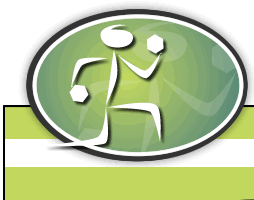Tips to Help You PASS!!
by Nicole
(Los Angeles)
I passed ACSM..YAY!! I thought the test was about the level of the practice exam available on this site, not as difficult as the quizzes in the ACSM Certification Review (well that goes beyond the personal trainer certification exam anyway) but not as easy as the practice test available for purchase on the ACSM learning website. I hope that gave a good gauge of difficulty. Like any exam, if you prepare adequately, you will be ok :)
My study strategy: I took the ACSM workshop, studied for a total of 2 weeks casually (about 3-4 hours a day), and then very intensely (8+ hours a day) for 4 days before taking the exam. I started this study review program about 5 days before the exam, I took EVERY quiz and practice exam available on this site until I was scoring at least 90%, I took the ACSM practice test available at acsmlearning.org, and I took all of the quizzes in the ACSM Certification Review book until I was scoring at least 80% (some of the questions did not pertain to us like EKG readings). I also made A LOT of flashcards...stacks and stacks of them.
Some pointers (I just got back from taking the exam, so it's fresh):
**No tables for reference or conversions were given**
Know the risk stratification for Coronary Heart Disease (low, moderate, high):
Positive Risk Factors:
Family history of MI
Smoking
Blood Pressure (diastolic, systolic)
Cholesterol (HDL and LDL)
Obesity: waist to hip ratio, waist circumference, BMI
Negative Risk Factors:
HDL > 60
Contraindications for exercise testing, what is a relative contraindication and absolute contraindications
Physiology of running (what muscles are doing during the eccentric and concentric phases, what happens when a person starts running on an incline)
Emergency procedures:
What to do when client w/ Type I diabetes, while exercising skin becomes ashen, starts sweating, dizzy, unsteady gait
When to use an AED device
Business:
Negligence
Malpractice
Calculations:
How to get METs when only VO2max is given
BMI
Know conversions: inches to cm to m, lbs to kg
Ideal Body Weight
Fat Free Mass
Fat mass
How to find HRmax, HRR, target heart rate
Calories in protein, fat, carbohydrate, alcohol
ACSM's recommendations for maintaining and improving cardiorespiratory endurance and fitness, muscular endurance, muscular strength
Children with respect to endurance and resistance training
Shoulder impingement syndrome and what exercises should not be done in this case
Physiology/Anatomy:
Rotator cuff muscles and their specific functions
What primary muscles are worked during a lateral shoulder abduction
Agonist and antagonist muscles during push up, squat, hip flexion and extension
Know sagittal, horizontal, frontal planes and what movements take place in each plane (ie a lunge is in the ____ plane)
Muscle actions in the eccentric and concentric phases of an exercise
I did not have to identify muscles or bones on a figure like in the anatomy section of this site, but you still need to know where the muscles are located for some of the questions: ie gastrocnemius is in the calf
Know the proper names for muscle groups ie hamstring group is comprised of the biceps femoris, semimembranosus, and semitendinosus
**Make sure you can apply your knowledge of muscle movement in both phases of the exercise (eccentric and concentric): what is happening when running uphill, when doing a push-up, lateral shoulder abduction, squat, trunk flexion while standing
One of the questions asked something like: A mechanic lifts heavy object over head most of the time at work. what is the best exercise for him? a) lateral shoulder abduction, b) overhead shoulder raise, etc
DOMS and what types of muscle movement make DOMS more intense
Nutrition:
Know how to read a label and calculate amount of calories in half of the box, what % of the total calories is from carbohydrates in 3 servings, etc
A person cuts calories by 1000/ day and increases exercise to burn 1100 in a day. How much what will she loose in 1 week?
I think that's about all I remember from the test. I hope this helps all of you who are in the process of studying or about to begin. Definitely take your time studying and figure out what study methods work best for you. GOOD LUCK!!!!!



